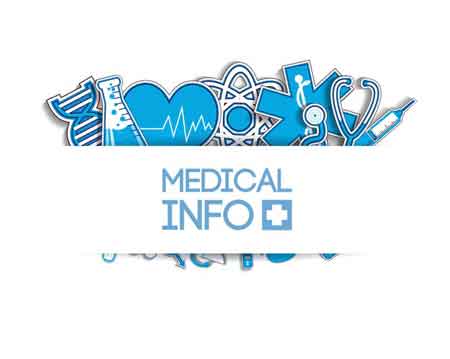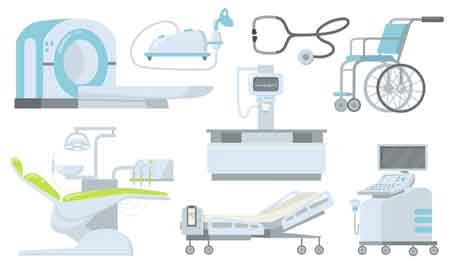Feasibility of Durable Medical Equipment

Community Health Systems, Inc. is a nonprofit healthcare organization that is committed to providing comprehensive primary health care to citizens of southern West Virginia. The organization was established in 1967 as a demonstration health care project. The organization first was established in leased space from a local nonprofit hospital in Beckley, West Virginia. The organization then moved its corporate office in 1977 to 252 Rural Acres Drive in Beckley, West Virginia and operates from that location today. The company has grown over the years and has 9 locations, 33 providers, and over 150 employees Of the 9 locations, the majority are in the Beckley area and the others are in close proximity. The following clinics are located in Beckley, West Virginia: Rural Acres Clinic, Carriage Drive Clinic, Access Health Stanford, CHS Associates, and CHS Professional Medical Ultrasonic’s. The remaining locations are Glade Crest Clinic in Daniels, WV, Clear Fork Clinic in Colcord, WV, Marsh Fork Clinic in Arnett, WV, and Glen Rogers/Ravencliff Clinic in Ravencliff, WV. The organization offers primary health care services including:
1. Family Practice
2. Pediatrics
3. Internal Medicine
4. OB/GYN
5. Ultrasonic’s
6. Laboratory
7. Pharmacy
8. Billing
9. Administrative
The pharmacy is a 340(b) provider of prescription drugs. This means that the pharmacy provides customers the lowest possible price on prescription drugs at the same rate the federal government is allowed to purchase the products. According to Charles Hunt CEO of the organization, in 2005, Community Health Systems, Inc rendered services to 34,998 users accounting for 112,467 patient encounters (C. Hunt, personal communication, May 28, 2006). Community Health Systems, Inc. insurance and programs offered to customers are Medicaid, Family Planning, Cancer Control, Children’s Health Insurance Program, Medicare, United Mine Workers Association, Sliding Fee Scale, Patient in Need, and Discounted Pharmaceuticals.
Issues

The idea for this project was introduced by the Pharmacy Director in a management team meeting. Because of the potential revenue, the Chief Executive Officer asked the facilitator to explore the potential of carrying durable medical products. The facilitator was responsible for gathering information on durable medical equipment and determining financial projections so the management team could decide the direction they want to take on the issue. Durable medical equipment is described as wheelchairs, crutches, wrist splints, gauze, needles, and other types of supplies.
Context and Stakeholders
First, the organization is established as a Federally Qualified Health Center that receives a grant from the Department of Health and Human Resources in the amount of $1.6 million dollars every April 1st. The grant allows the organization to provide healthcare services to low income people based on a sliding scale fee in relation to their monthly income. Second, the providers that are employed by the organization are not responsible for medical malpractice insurance because they are covered by the Federal Tort Coverage Act. The government covers all lawsuits in relation to receiving medical care at any of the nine locations that Community Health Systems, Inc. operates.
One of the stakeholders of the organization is the government. It provides grant money to offer healthcare to the underserved population. Second, citizens that need healthcare are stakeholders because of the many different payment plans that are available based on household income. Third, employees of the organization may benefit from this research because they help the organization carry out the mission and the vision. The last stakeholder of the organization is the community in which the company operates because it brings low-cost healthcare and jobs.
Affecting Issues
Organizations that are affected by the issues are other local durable medical equipment businesses within the location that Community Health Systems, Inc operates. Patient services are also affected by the issues because their care is controlled within the Community Health Systems, Inc. frame of business and their providers are writing prescriptions to an entity of this organization if the management team decides to move forward with pursuing the durable medical equipment market. The organization’s strategic plan is affected because this is a market that has never been in discussion as a future service of the organization.
Purpose
The purpose of this research is to determine the feasibility of expanding services into the durable equipment market.
Significance
The information gave the management team of Community Health Systems, Inc. a broad overview of the potential or exclusion of such a project. The researcher investigated all possible revenue streams related to the durable equipment market. This allowed the Community Health Systems team to see how other organizations operate within this market. The organizational impact of the project had been creating an additional revenue stream for the organization and creating more jobs within the local community.
Content
The researcher constructed the following sections of the research; focus and framing, literature review, methodology, constructing accounts, and plan of action. The focus/framing section gave a brief overview of what Community Health Systems, Inc. is made up of in structure. The literature explored what others are saying about the durable equipment market, reimbursement rates, forms, and other policies that are compromised of this particular venture. The methodology section provided a detailed plan in how the research project had been carried out. The constructing accounts section told the stories of the stakeholders and their viewpoints in relation to the study. The plan of action section demonstrates the steps the researcher took in the project based on recommendations from the management team of Community Health Systems, Inc. In the financial section of this project the researcher constructed data based on information gathered from various sources and showed what the potential profit is based on what the insurance carriers pay.
Leadership Model
The researcher used the change theory method of leadership in showing others the possibilities of offering durable medical equipment within their established scope of business. Change theory is about motivating others to help the organization with its mission and vision. Servant leadership was a key part of the model because the researcher worked with others and encouraged everyone to be participative and to give feedback. The researcher acted as the project manager and moved the whole research from the start to the finish.
Literature Review

What others say is happening
The Durable Medical Equipment (DME) market has seen dramatic changes year after year and regulations from insurance providers will continue to add new laws to curb abuse and waste. According to Senator Chuck Grassley, “Fraud, waste, and abuse are enemies of the health care system” (Kozeny, 1997, para. 6). Healthcare costs are always rising and it doesn’t help when the insurance carriers have to keep strict guidelines for reimbursement because of abuse and fraud. The negative side of the business has pushed Medicare and Medicaid to tighten controls on what equipment they paid for as a result of fraudulent claims by durable medical businesses. Citizens Against Government Waste (1997) gives the following fraud examples as cases against DME providers:
As part of a plea bargain agreement, a Texas DME company paid restitution of $450,000 and was sentenced to one year probation for supplying wheel chair pads to nursing home patients and then fraudulently billing Medicare for a more expensive lumbar sacral support system.
A Pennsylvania DME company agreed to pay $110,000 to settle criminal and civil liabilities for submitting false claims to Medicare for marketing and distributing lower-quality body jackets to long-term care facilities than those actually delivered. The company and its president were barred for life from participation in any HHS programs.
A physician fled to the Dominican Republic and his cohort in crime fled to Sierra Leone for preparing and signing fraudulent certificates of medical necessity for DME. A New York judge sentenced the Dominican refugee in absentia to 78 months in prison and ordered him to pay $3.5 million. His partner waived extradition to return to the United States.
A New York DME company used a sham subsidiary to submit claims in Pennsylvania for equipment sold in Western New York. In addition to a criminal fine of $300,000, the subsidiary also pled guilty and agreed to make full restitution of $1.1 million and to pay a civil penalty of $2.5 million.
These fraudulent schemes of durable medical equipment businesses have contributed to the strict guidelines for reimbursement. Insurance companies also play into the political side of the business in delaying claims for payment because additional information may be needed. These examples show that employees will be required to keep everything documented and organized in case of an audit by an insurance carrier.
Insurance fraud is a continuous battle with durable medical equipment businesses. For example, Senator William Cohen of Maine explained how Medicare beneficiaries are recipients of fraud. He said that a supplier paid $28.57 for a mattress that was supposed to prevent sores and billed Medicare for $1,132. Medicare paid $943 of the price and the rest was left for the customer to pay (The Intelligencer, 1991, p. c-15).
According to Center for Medicare & Medicaid (1998) they have implemented new guidelines for businesses that operate as a durable medical equipment supplier that states the following requirements:
Under the regulation published today, suppliers of DME (including wheelchairs, canes, and other medical supplies) would be required to obtain surety bonds of at least $50,000. In addition, the proposed regulation would ban DME supplier telemarketing; require suppliers to have a physical office and listed phone number; codify a requirement that suppliers reenroll in Medicare every three years; prohibit suppliers from reassigning a supplier number; and apply criminal and civil sanctions for misrepresentations on billing number applications (para. 2).
One new major reform of the durable medical equipment is that Medicare is proposing a competitive bidding program for suppliers. Senior Journal.Com (2006) states the following proposal:
The new competitive acquisition program, which is required by the Medicare Modernization Act of 2003 (MMA), would replace the current DMEPOS fee schedule payment amounts for selected items in select areas. CMS has discretion under the law to first phase in DMEPOS items for bidding based on high cost and volume or largest savings potential. Suppliers in a competitive bidding area would submit bids for selected items, and CMS would use these bids to establish Medicare payment amounts for these items. Under the proposed rule, the Medicare payment amounts would be the median of the winning suppliers’ bids for selected items (para. 5-6).
Payment policies for most insurance providers are based on what the Federal Government reimburses businesses for services and supplies. According to Medicare.gov (n.d.) the payment method that is established is called assignment which is an agreement between Medicare and doctors, other health care providers, and suppliers of health care equipment and supplies (wheelchairs, oxygen, braces, and ostomy supplies). Doctors, providers, and suppliers who agree to accept assignment accept the Medicare-approved amount as full payment. The patient pays the coinsurance (usually 20 percent of the approved amount) and deductible amounts.
West Virginia has several requirements on top of what Medicare has established as policies of opening a Durable Medical Equipment (DME) business. The State requires businesses to have a valid business license; a physical store location, within a 30-mile radius of WV borders; be handicapped accessible and be able to show detailed records of all customers serviced by the organization. West Virginia’s government does random audits of billing from DME companies. The Medicaid program of WV has the same guidelines as Medicare in requiring providers to write a prescription for medical necessity for durable medical equipment (State of West Virginia Department of Health and Human Resource, 2002).
Future
The future of the durable medical equipment market is going to grow as the baby boomers start to age. Baby boomers are those citizens that were born between 1946 and 1964 in the United States. The Great American Group (2004) states “As our nation’s baby boom generation moves further into retirement age, and as life expectancies continue to expand, the need for medical equipment will grow exponentially” (para. 1). D.R. Clark (2006) gives the following outlook:
Investors in biotech and many other healthcare concerns are often relegated to distant investment time horizons, requiring the biblical patience of Job. But healthcare’s conservative kissin’ cousin, durable medical equipment (DME), shouldn’t be overlooked with the massive throng of baby boomers in need of ‘replacement parts.’ DME, which generally lacks the FDA hurdles associated with biotech, may indeed hold greater immediate promise for investors Excite Money and Investments (2006).
Consistent with this claim, there seems to be room for growth in Beckley, West Virginia. Robert Butcher, the Pharmacy Director of Access Health Pharmacy, stated that Eppy’s Drug store located in Beckley, WV does most of their business by selling durable medical equipment. He said most of the sales of this type of business is a cash business and provides extra revenue for the company. He mentioned that the service could be easily implemented within the current pharmacy services that are provided by Community Health Systems. In regard to Eppy’s Drugs, he mentioned that he felt like most of their income was from the home health side of the business and less from filling prescriptions. (Personal interview, June 3, 2006).
The future of healthcare is only going to keep getting more expensive. Federally qualified health centers have the chance now to make a dramatic change to healthcare within the United States. These organizations are allowed to offer discounted medical care to the underserved population. The President of the United States stated “I support increasing the number of community health centers across America. Community health centers are community-owned, locally administered medical clinics where people can receive preventive care, free vaccine clinics, health alerts, disease screening, and counseling. They have become America’s health care safety net. Under my plan, we would provide $3.6 billion in federal money over a five-year period to create 1,200 new centers from coast to coast” (USA Today, 2000).
Apropo Benefits Management states that “Looking ahead, as the aging of baby boomers affect the utilization of DME benefits, it’s estimated that the current $6 billion spent on this population alone for DME services will nearly double over the next three decades” (Apropo Benefits Management, n.d., para.4). This leads to the fact that baby boomers are going to need these items to function in daily living. Companies that capitalize on this market will people function as normal as possible with the use of advanced technology in the durable equipment market.
